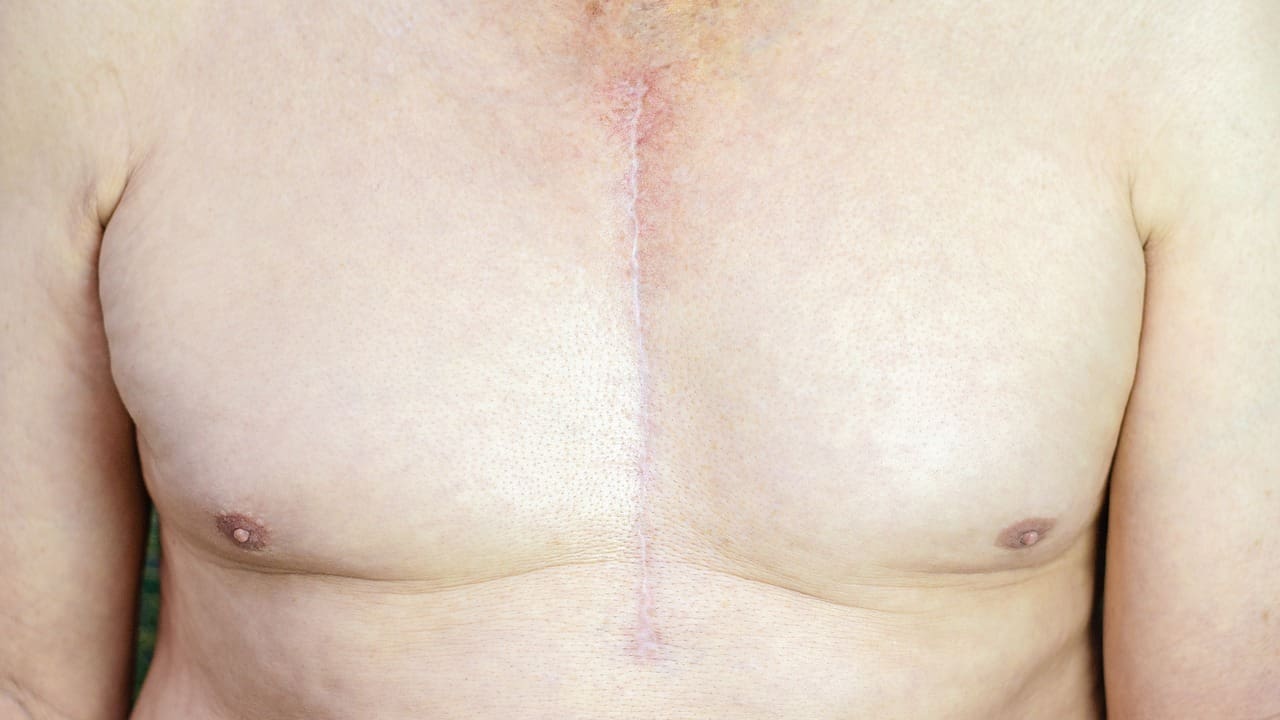Last Updated on November 27, 2025 by Bilal Hasdemir

For many patients, radioactive iodine treatment is a key step in managing Graves’ disease. After this treatment, it’s important to know how the body changes.
At Liv Hospital, we help our patients through every part of their journey to better thyroid health. Our care is top-notch, ensuring patients get all the support and guidance they need during recovery.
Most patients need to take thyroid hormone every day for the rest of their lives after radioactive iodine treatment. It’s key to understand how this treatment affects you to manage your condition well.
Key Takeaways
- Radioactive iodine treatment is a common procedure for managing Graves’ disease.
- Most patients develop hypothyroidism after treatment and require lifelong thyroid hormone replacement.
- Ongoing medical supervision is essential for monitoring treatment outcomes.
- Liv Hospital provides complete care and guidance throughout the recovery process.
- Effective condition management is vital for keeping overall health.
The Basics of Radioactive Iodine Treatment for Graves’ Disease
Understanding radioactive iodine treatment is key for Graves’ disease patients. It’s a main way to manage hyperthyroidism caused by Graves’ disease.
How RAI Treatment Works
Radioactive iodine (RAI) treatment uses the body’s natural process. The thyroid gland takes in iodine to make thyroid hormones. When RAI is given, it goes to the thyroid gland and kills thyroid cells.
This reduces hormone production. It helps treat hyperthyroidism by lowering hormone levels.
Why RAI Is Prescribed for Graves’ Disease
RAI is chosen for Graves’ disease because it’s simple, effective, and safe. It’s often picked for those who didn’t get better with other meds or want a lasting solution. The aim is to make the thyroid less active, which is then treated with hormone replacement.
Treatment Success Rates
About 90 percent of patients get better after one RAI treatment. Success depends on the RAI dose, thyroid size, and activity.
| Treatment Outcome | Percentage of Patients |
| Hypothyroidism | 80-90% |
| Euthyroidism | 5-10% |
| Hyperthyroidism Persistence | 5-10% |
The table shows typical results after RAI treatment. Most patients need lifelong hormone replacement because they become hypothyroid.
The Immediate Recovery Period
After RAI treatment for Graves’ disease, patients face a key recovery phase. They need to follow safety rules and get medical check-ups. It’s important to know how long it takes to get better, stay safe from radiation, and get the right care.
Physical Recovery Timeline
Recovery times can differ, but most start feeling better in a few days. It might take up to a week or more for the full effects to show. The body needs time to adjust to the changes.
Key aspects of physical recovery include:
- Managing fatigue and rest
- Monitoring for any signs of hypothyroidism
- Gradually resuming normal activities
Radiation Safety Precautions
For a few days after treatment, patients are radioactive. They must take steps to avoid exposing others to radiation. This means:
- Avoiding close contact with pregnant women and young children
- Sleeping alone for a few nights
- Not preparing food for others
- Using separate utensils and toilet facilities when possible
Initial Follow-up Care
After treatment, regular check-ups are vital. They help see if the treatment worked and if the patient is okay. This care includes:
| Follow-up Activity | Purpose | Timeline |
| Blood tests | Monitor thyroid hormone levels and adjust medication as needed | 4-6 weeks post-treatment |
| Thyroid function tests | Assess the thyroid gland’s function and the effectiveness of RAI treatment | 3-6 months post-treatment |
| Endocrinologist visits | Evaluate overall health, address concerns, and adjust treatment plans | Ongoing, as recommended by the healthcare provider |
By following these guidelines, patients can have a smoother recovery. This helps them get the best results from RAI treatment for Graves’ disease.
Transitioning to Hypothyroidism
After RAI treatment, patients often start to feel the effects of hypothyroidism. This marks a new stage in their thyroid health journey. They need to make changes in treatment and lifestyle to manage their condition well.
The Shift from Hyper to Hypothyroidism
RAI treatment aims to lower thyroid hormone production. It helps control hyperthyroidism from Graves’ disease, but can make the thyroid underactive. Most patients need to take thyroid hormone replacement therapy for life after RAI treatment.
After RAI, the thyroid gland can’t work like it used to. Patients may feel tired, gain weight, and feel cold easily. It’s important to understand this change to manage their condition well.
Timeframe for Hormonal Changes
The time it takes for hormonal changes to settle after RAI treatment varies. It can take weeks to months for the full effects to show and for hypothyroidism to be fully established.
During this time, patients have regular blood tests to check their thyroid hormone levels. These tests help doctors decide when to start treatment and how much to take.
Recognizing Hypothyroid Symptoms
It’s key to know the symptoms of hypothyroidism to get help early. Common signs include:
- Fatigue and weakness
- Weight gain
- Cold intolerance
- Dry skin
- Hair loss
It’s important for patients to tell their healthcare provider about any new or worsening symptoms. This ensures their treatment plan is right. Managing hypothyroidism well can greatly improve life after RAI treatment.
Life After Radioactive Iodine Treatment for Graves’ Disease
After radioactive iodine treatment, patients face a new reality. They need to take daily hormone replacement therapy. This change is key to managing their condition well.
Daily Hormone Replacement Therapy
After treatment, the thyroid gland can’t make enough hormones. So, patients need daily thyroid hormone replacement therapy. They take synthetic thyroid hormone, like levothyroxine, to keep hormone levels right.
Starting new meds can be tough. But it’s vital for staying healthy and avoiding hypothyroidism symptoms.
Finding the Right Medication Dosage
Finding the right thyroid hormone dose is important. The dose varies based on gland damage and metabolic needs.
We help patients find the right dose with blood tests and check-ups. It’s a process that takes patience and some trial and error.
Adapting to a New Normal
Life after treatment is more than meds. It’s about a new lifestyle with regular checks and diet changes. We support our patients through this change.
By understanding the need for daily hormone replacement therapy and finding the right dose, patients can adjust well. They can live active, healthy lives.
Long-term Medical Monitoring Requirements
The journey doesn’t end after RAI treatment; ongoing medical monitoring is essential for maintaining health. After undergoing Radioactive Iodine treatment, it’s vital to know that long-term medical supervision is not just recommended, it’s necessary. Ongoing monitoring helps in managing the condition effectively and preventing possible complications.
Frequency of Blood Tests and Check-ups
Regular blood tests are vital to monitor thyroid hormone levels. Initially, these tests may be conducted frequently, such as every 4-6 weeks, to adjust medication dosages. As the thyroid hormone levels stabilize, the frequency of blood tests may decrease, but they remain a key part of long-term management.
“The key to successful management of hypothyroidism post-RAI is regular monitoring and adjustment of thyroid hormone replacement therapy.”
“By closely monitoring markers such as TSH, free T3, and free T4, healthcare providers can get an accurate picture of the patient’s thyroid function and make necessary adjustments.”
Working with Your Endocrinologist
Developing a strong partnership with your endocrinologist is key. They will guide you through adjusting your medication, interpreting blood test results, and addressing any concerns or symptoms. Regular check-ups, typically every 6-12 months, help in maintaining optimal thyroid hormone levels.
Signs That Warrant Immediate Medical Attention
While undergoing long-term medical monitoring, it’s essential to be aware of signs that may indicate a need for immediate medical attention. These can include significant changes in heart rate, unusual fatigue, or other symptoms that may suggest an imbalance in thyroid hormone levels. Prompt reporting of these symptoms can help in making timely adjustments to your treatment plan.
By understanding the importance of long-term medical monitoring and working closely with healthcare providers, individuals who have undergone RAI treatment can lead healthy, active lives. Regular blood tests and check-ups are fundamental components of this ongoing care, ensuring that any issues are identified and addressed promptly.
Potential Treatment Outcomes and Variations
It’s important to know what RAI treatment can do. This helps set realistic hopes and plan the best course of action. The success of RAI can differ a lot from person to person with Graves’ disease.
Complete Remission
About 90% of people get complete remission after one RAI treatment. This means their thyroid gland works much less or not at all. They then need hormone therapy to manage hypothyroidism.
Incomplete Hypothyroidism
Some folks might get incomplete hypothyroidism. This is when the thyroid works a bit, but not fully. They might need to keep an eye on it and possibly get more treatment to control it.
Persistent Hyperthyroidism
But sometimes, RAI doesn’t work well. This can lead to persistent hyperthyroidism. This situation needs more checking and might need more RAI or other treatments.
Need for Additional RAI Treatment
Some people might need more RAI treatment. This is because the first dose didn’t work fully or because hyperthyroidism comes back. More treatment is decided based on how well the thyroid is working.
| Treatment Outcome | Characteristics | Management |
| Complete Remission | Significant reduction or elimination of thyroid function | Hormone replacement therapy |
| Incomplete Hypothyroidism | Reduced thyroid function, not entirely eliminated | Ongoing monitoring, possible additional treatment |
| Persistent Hyperthyroidism | Thyroid hormone production is not effectively reduced | Further evaluation, more RAI, or other treatments |
| Need for Additional RAI Treatment | Incomplete response or recurrence of hyperthyroidism | More RAI treatment based on clinical evaluation |
Quality of Life After RAI Compared to Other Treatments
Looking at how different treatments for Graves’ disease affect quality of life is key. Research on RAI, antithyroid meds, and surgery gives us insights into their effects on well-being.
Research on Quality of Life Outcomes
Studies show how RAI treatment impacts quality of life. The Iodine or Not trial found that patients without RAI had better lives. There’s a moderate drop in quality of life 6-10 years post-RAI.
A study in Thyroid magazine highlights ongoing research on RAI’s long-term effects. Knowing these differences helps patients and doctors choose the best treatment.
RAI vs. Antithyroid Medications
Antithyroid meds are an alternative to RAI, with their own quality of life implications. Studies suggest these meds might lead to a better life than RAI. They help patients transition to hypothyroidism more smoothly, easing symptoms.
Here’s a comparison of treatment outcomes:
| Treatment | Quality of Life Impact | Hypothyroidism Onset |
| RAI Treatment | Moderate reduction in quality of life | Typically results in hypothyroidism |
| Antithyroid Medications | Generally better quality of life | Variable onset of hypothyroidism |
RAI vs. Thyroid Surgery
Thyroid surgery is another option, with its own quality of life implications. Surgery can be definitive but comes with surgical risks. Research shows both RAI and surgery can lead to hypothyroidism, but outcomes vary by patient.
In conclusion, when choosing a treatment for Graves’ disease, quality of life matters. RAI is effective, but comparing it to meds and surgery shows the need for personalized choices.
Managing Daily Life with Post-RAI Hypothyroidism
Hypothyroidism after RAI treatment requires a detailed plan for daily life. Patients must adjust their routines to handle the condition’s effects.
Energy Levels and Fatigue Management
Fatigue is a common symptom of hypothyroidism. It’s key to manage it well to stay productive and feel good.
- Prioritize rest and ensure adequate sleep each night.
- Engage in gentle exercises like yoga or short walks to boost energy levels.
- Consider consulting with a healthcare provider about supplements or medications that may help alleviate fatigue.
Weight Management Strategies
Many patients with hypothyroidism gain weight. To manage it, they need to change their diet and exercise.
| Strategy | Description |
| Dietary Adjustments | Focus on a balanced diet rich in fruits, vegetables, and lean proteins. |
| Regular Exercise | Engage in moderate-intensity exercises such as brisk walking, cycling, or swimming for at least 150 minutes per week. |
Exercise Recommendations
Exercise is key in managing hypothyroidism. It helps with weight and improves health.
Recommended Exercises:
- Aerobic exercises like walking, cycling, or swimming.
- Resistance training to build muscle mass.
- Flexibility exercises such as yoga or Pilates.
Dietary Considerations
A balanced diet is vital for hypothyroidism. Some nutrients are good, while others should be limited.
- Ensure adequate intake of iodine, selenium, and zinc.
- Consume foods rich in omega-3 fatty acids.
- Limit soy and cruciferous vegetables unless cooked.
By following these tips, patients can manage their hypothyroidism better. This improves their life after RAI treatment.
Long-term Side Effects to Monitor
After getting radioactive iodine treatment for Graves’ disease, it’s key to know about long-term side effects. RAI is a good treatment, but knowing its long-term effects helps you take care of your health better.
Common Persistent Symptoms
Some people might feel fatigue after RAI treatment. This can be a big problem. If you have these symptoms, it might mean your thyroid medication needs adjusting. We help you change your treatment to lessen these effects.
Blood Cell Changes
RAI treatment can cause small blood cell changes. It’s important to have regular blood tests to watch these changes. We stress the need for follow-up care to catch any problems early.
Managing Side Effects Effectively
It’s vital to manage long-term side effects well to keep your quality of life good. This means regular checks, adjusting your thyroid hormone therapy, and making lifestyle changes. We help you through this, making sure you get care that fits your needs.
By staying alert to long-term side effects, you can reduce their impact. This way, you can live a healthy life after RAI treatment.
The Debate on Cancer Risk After RAI
Radioactive Iodine (RAI) treatment for Graves’ disease has sparked debate. This is mainly about its possible link to cancer risk. It’s vital to look at the latest research, understand the need for cancer monitoring, and weigh RAI’s benefits against its risks.
Current Research Findings
Studies on RAI and cancer risk have shown mixed results. Some big studies found a slight increase in cancer risk for certain types. Yet, others found no big link. For example, a study in the Journal of Clinical Endocrinology and Metabolism found a small rise in thyroid and other cancers after RAI. But, a study in the Journal of Nuclear Medicine said the overall cancer risk wasn’t much higher for Graves’ disease patients treated with RAI.
The different findings show how hard it is to figure out cancer risk after RAI. Things like the RAI dose, treatment length, and patient health can change the risk. So, it’s important for patients to talk to their doctors about their own situation.
Monitoring for Possible Cancer Risks
Even with an uncertain cancer risk from RAI, regular checks are key. Patients should get regular check-ups and screenings as their doctor suggests. This might include thyroid tests, cancer screenings, and other tests based on their risk and health history.
Spotting problems early is critical for managing them well. Patients should tell their doctor about any new or strange symptoms. This way, they can get checked out and treated quickly if needed.
Balancing Benefits Against Possible Risks
The debate on RAI and cancer risk goes on, but we must think about the treatment’s benefits. RAI is a mainstay in treating Graves’ disease, helping many patients find long-term relief or a cure.
For many, RAI’s benefits, like stopping hyperthyroid symptoms and avoiding long-term meds, are worth the risks. But every patient is different. Deciding on RAI should be a careful talk with a doctor, considering each person’s risks, health, and wishes.
Can Graves’ Disease Return After RAI?
Patients often worry if Graves’ disease can come back after Radioactive Iodine (RAI) treatment. RAI is usually effective in managing Graves’ disease. But knowing if it can come back is key to long-term care.
RAI treatment uses radioactive iodine to shrink or remove part of the thyroid gland. This helps control hyperthyroidism from Graves’ disease. Yet, the risk of the disease coming back or Graves’ antibodies staying is a concern.
Persistence of Graves’ Antibodies
Graves’ disease is an autoimmune disorder. It’s marked by antibodies that make the thyroid gland produce too much thyroid hormone. Even after RAI treatment, these antibodies can stay in the body.
Persistence of Graves’ antibodies does not necessarily mean the disease will recur, but it shows the autoimmune process is ongoing. It’s important to watch for signs of recurrence or ongoing hyperthyroidism.
Thyroid Tissue Regrowth Possibilities
In some cases, the thyroid gland can grow back after RAI treatment. This can lead to hyperthyroidism again. The chance of this happening depends on the RAI dose and how much of the gland was destroyed.
| Factors Influencing Thyroid Regrowth | Description |
| Dose of RAI | The amount of radioactive iodine given during treatment affects the extent of thyroid gland destruction. |
| Extent of Gland Destruction | The proportion of the thyroid gland destroyed during RAI treatment influences the likelihood of regrowth. |
| Individual Variability | Patients’ responses to RAI treatment can vary, affecting the likelihood of thyroid regrowth. |
Signs of Possible Recurrence
Patients who had RAI treatment should watch for signs of Graves’ disease coming back. These include:
- Return of hyperthyroid symptoms such as weight loss, palpitations, or tremors
- Changes in thyroid hormone levels are shown by blood tests
- Any new or worsening symptoms that were present before RAI treatment
Regular check-ups with an endocrinologist are vital. They help monitor thyroid function and catch any recurrence early.
“The goal of RAI treatment is to achieve a stable euthyroid state, either by destroying enough thyroid tissue to render the patient hypothyroid or by significantly reducing thyroid hormone production. Yet, the presence of Graves’ antibodies and the chance of thyroid regrowth mean ongoing monitoring is necessary.”
Conclusion: Living Well After RAI Treatment
Life after radioactive iodine (RAI) treatment for Graves’ disease needs adjustments. But, with the right care and management, patients can live well. Managing hypothyroidism is key to a good life after RAI treatment.
Patients can live a fairly normal life, but it won’t be the same as before. Daily hormone replacement therapy becomes a new part of life. Finding the right medication dosage is very important.
Adapting to changes in energy levels and weight management is vital. Regular medical check-ups and follow-up care with an endocrinologist are also important. This ensures patients get the support they need.
Living well after RAI treatment is possible with the right mindset and support. We stress the importance of managing hypothyroidism and adapting to the new normal. This way, patients can lead active and fulfilling lives.
FAQ
What is life like after radioactive iodine treatment for Graves’ disease?
Life changes a lot after radioactive iodine (RAI) treatment. You’ll need to take hormones every day. Finding the right dose is key. You’ll also need to get used to a new routine.
Working with your doctor is important. They help you manage your condition and adjust to the treatment’s effects.
How does RAI treatment work for Graves’ disease?
RAI treatment destroys your thyroid gland. This stops the hyperthyroidism caused by Graves’ disease. The goal is to get into remission. Studies show RAI works well for most patients. It helps control the disease.
What are the immediate effects of RAI treatment?
Right after treatment, you need to follow certain rules. This ensures you heal safely. You’ll learn about the healing time and how to stay safe from radiation. You’ll also get initial care. For a few days, you must avoid being close to others. This is because you’re radioactive.
How long does it take to transition from hyperthyroidism to hypothyroidism after RAI treatment?
The time it takes for hormonal changes varies. But most people start feeling hypothyroid symptoms a few weeks to months after treatment. I t’s important to understand these changes. Recognizing hypothyroid symptoms helps manage your new condition well.
What are the long-term medical monitoring requirements after RAI treatment?
Long-term monitoring is key after RAI treatment. You’ll need regular blood tests and visits to an endocrinologist. This helps keep an eye on your thyroid hormone levels. Adjusting your medication as needed is important. Knowing when to seek immediate medical help is also vital to avoid complications.
Can Graves’ disease return after RAI treatment?
RAI treatment can control Graves’ disease, but it might come back. It’s important to know the signs of recurrence. This includes the possibility of thyroid tissue growing back. Understanding these signs is essential for managing your condition long-term.
What are the long-term side effects of RAI treatment?
There are possible long-term side effects of RAI treatment. These include ongoing symptoms and changes in blood cells. Managing these side effects is important for your quality of life. Regular monitoring and adjusting your treatment plan can help lessen these effects.
Is there a risk of cancer after RAI treatment?
The risk of cancer after RAI treatment is a topic of ongoing research. The findings are mixed. It’s important for patients to stay informed about the latest research. Working closely with your healthcare provider is key. They can help you weigh the benefits of RAI treatment against the risks.
How does RAI treatment compare to other treatments for Graves’ disease in terms of quality of life?
Research shows how RAI treatment affects quality of life compared to other treatments. While RAI is effective, it might slightly lower your quality of life. This is compared to treatments like antithyroid medications or thyroid surgery. Understanding these differences helps you make informed decisions about your treatment.
Can thyroid tissue regrow after RAI treatment?
There’s a chance thyroid tissue can grow back after RAI treatment, but it’s rare. It’s important to stay vigilant and work closely with your healthcare provider. This way, you can monitor your condition and address any issues that might arise.
How can patients manage daily life with post-RAI hypothyroidism?
Managing daily life with hypothyroidism after RAI treatment requires a holistic approach. This includes managing energy levels, weight, exercise, and diet. Adapting your lifestyle to mitigate hypothyroid symptoms is essential. This helps maintain your overall well-being.
Do patients always have to take hormone replacement therapy after RAI treatment?
Yes, most patients need to take hormone replacement therapy after RAI treatment. Finding the right dosage is critical for maintaining the right thyroid hormone levels.
Reference:
National Center for Biotechnology Information – The Efficacy and Short- and Long-Term Side Effects of RAI Treatment






